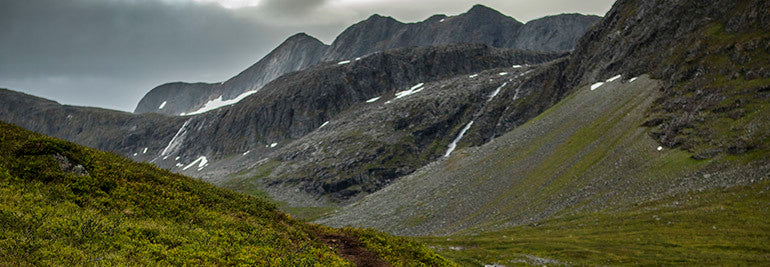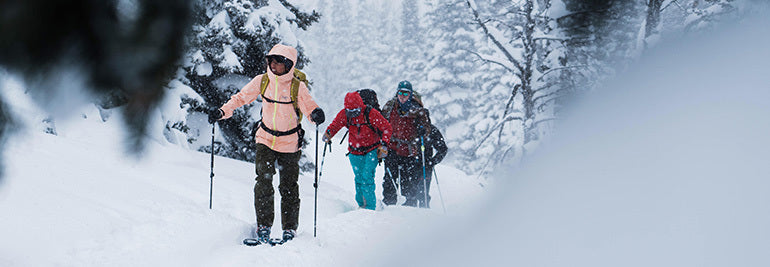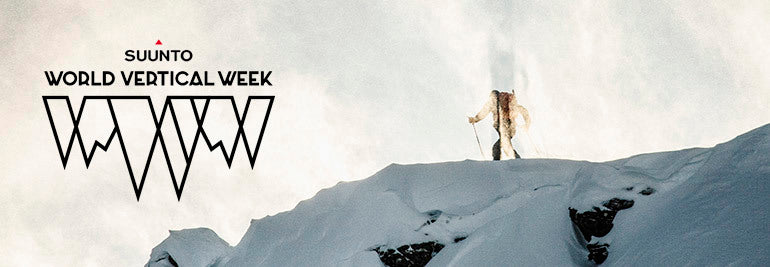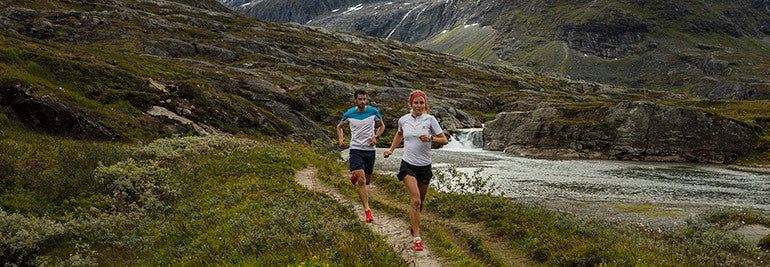

Suunto Blog

Suunto Multisport Team season kick-off in St George
Last weekend 50 athletes from the Suunto Multisport Team descended on the trails of St. George, Utah, to kick off the team’s inaugural 2019 season. The Suunto Multisport Camp spanned three days, offering an opportunity for professional and amateur triathletes and runners to meet, participate in workshops and familiarize themselves with team product during group runs, rides and swims.
“The Suunto Multisport Camp served as the perfect venue for us to gather with teammates, team management, and sponsors to celebrate the start of what we hope will be an immensely successful 2019 season. While every member of this team is focused on performance and competition, this roster of athletes comprises a unique collection of elite and amateur athletes who all have compelling stories to tell,” says Caleb Whittle, head of brand marketing for Suunto in the Americas.
One of those stories came from Brian Boyle. After surviving an automobile accident that pulverized his bones and organs, stripped him of over 60 percent of his blood, stopped his heart eight times and left him in a coma for two months, Boyle powered through years of rehabilitation and has now finished seven IRONMAN 70.3s, seventeen marathons and two 100-mile ultramarathons, all while advocating for the American Red Cross.
“Getting to meet so many incredible athletes at the camp that share the same enthusiasm for the sport was amazing. It was very rewarding to learn about their backgrounds and experiences, train alongside them and to be able to learn from their training and racing recommendations. After returning from camp, I'm very motivated to go into my next race, represent the team and to follow my teammates throughout the year as they participate in their events,” Brian says.
Watch the video below to get a taste of what it was like in St. George!
Every member of the Suunto Multisport Team will be using the Suunto 9—our latest multisport GPS watch equipped with a 120-hour battery life, wrist-based heart rate and 80 sport modes. Additional sponsors who equipped the team included Enve Composites, Jaybird, Castelli, Blueseventy, BOCO Gear, Kanberra Sport, Petzl, Nuun, and Hyperice.
Suunto Multisport Team Roster 2019
Barbara Peterson
Brandi Swicegood
Caroline Coble
Chris Johnson
Dave Orlowski
Deanna Newman
Derk de Korver
DJ Snyder
Eliot Scymanski
Ellen Hart
Elyse Gallegos
Emily Rollins
Felicity Joyce
Jacqui Giuliano
James Burke
James Hotson
Jeff Mutchie
Josiah Middaugh
Karsten Madsen
Katie Schick
Katie Thomas Morales
Kelly Lambert
Kelsey Withrow
Kinsey Laine
Lisa Roberts
Matt Davidson
Molly Smith
Ralph Nurse
Roger Thompson
Ryan Giuliano
Sam Long
Samantha Mazer
Samantha Snukis
Sarah Barber
Shannon Coates
Susanne Davis
Tim Hola
Timothy Winslow
Trista Francis
Adam Olson
Alex Borsuk
Allan Spangler
Beth Risdon
Brian Boyle
David Fuentes
Denise Sauriol
Jonnah Perkins
Jordan Grande
Justin Cogley
Kelly Young
Liz Canty
Nora Bird
Robert Steffens
Ryan Montgomery
Sawna Guadarrama
Tara Warren

Big data for Vertical Week 2019 is here: find out who came out on top!
When we crunched the statistics from all the training around the world during Suunto World Vertical Week 2019, we felt our hard work had paid off. It had given you all the excuse to chase meters outside, whether on behalf of your nation, chosen sport or for your own challenge – exactly our intention.
There’s something about the sight of a hill or mountain in front of us that calls us to push ourselves. The challenge of the ascent is just as satisfying as the view from the top. That’s why we do it! Well done to everyone who participated.
Top countries
This year, we first report a major upset. In the previous two years, Austria has come out on top as the nation that achieves the most vertical gain by average. Not this year – the Alpine nation has been knocked off its perch. This year, Italy, Slovakia and Slovenia, all mountainous nations, climbed more than Austria. But more surprising, Portugal also came in ahead of Austria.
In the last two years the Swiss have also come in near the top, but this year they have dropped to the eighth position. What’s happened in Austria and Switzerland? Someone tell us!
Honorable mention
This year, Spain deserves an honorable mention. Spain came first in three divisions: totals per country, mountaineering, and trekking. It was also in the top five for four different activities: mountaineering, trekking, mountain biking and cycling. All up, Spain features in six of the nine country-related lists below, the only country to do so. Well done Espana!
Here are the results by nation
While these numbers might not seem so mind-blowing, remember they are averages, and a high average is indicative of many big days out in the hills.
Italy 385 m
Slovakia 360 m
Slovenia 346 m
Portugal 342 m
Austria 337 m
Spain 308 m
Switzerland 288 m
France 283 m
Canada 276 m
Norway 261 m
Totals per country
This year we also decided to look at the totals per country. In these countries, World Vertical Week participants have been really active and gotten out there to climb, even only a little, to add on their country’s total number. These little efforts have added up.
Spain 645.000 m
France 546.000 m
Italy 379.000 m
United States 377.000 m
China 250.000 m
Austria 216.000 m
United Kingdom 183.000 m
Japan 150.000 m
Norway 142.000 m
Switzerland 140.000 m
Average ascent by activity
At least as interesting as the country numbers are the activity specific stats. From these, we can see that skiers clearly put in the biggest average days. Trail running and mountain biking are probably under-represented because it’s winter in the populous Northern Hemisphere.
Like Vertical Week 2018, ski touring, mountaineering and trail running came out on top this year. The question is, which nations did the most of each?
Ski touring 830 m
Mountaineering 594 m
Trail running 474 m
Mountain biking 355 m
Trekking 311 m
Hiking 213 m
Nordic skiing 199 m
Cycling 193 m
Running 100 m
Activity by country
Ski touring
France 1127m
Italy 1085m
Austria 864m
Switzerland 828m
Germany 776m
Two countries pass 1000 m of vertical gain by average!
Mountaineering
Spain 1071m
UK 947m
Poland 798m
USA 716m
Germany 651m
Trail running
Hong Kong 1176m
Japan 901m
Malaysia 813m
China 765m
Portugal 713m
Asia dominating, showing the growing popularity of the sport in the region!
Mountain biking
Italy 476m
Slovakia 474m
UK 437m
Spain 422m
Austria 394m
Cycling
Colombia 499m
South Africa 485m
Israel 446m
Spain 438m
Italy 363m
These nations have favorable weather for cycling in March!
Nordic skiing
France 379m
Canada 321m
USA 285m
Norway 243m
Austria 212m
Trekking
Spain 566m
Italy 527m
Malaysia 363m
Italy 362m
Poland 304m
Individual top performances
While we can’t give away too much information here, such as who and where, we can share some insight in the individual top performances over the week: To be on the pointy end of the rankings one had to climb more than 10000 meters over World Vertical Week. And to stand out with a single activity one had to climb 4000+ meters in one go!
Thank you, everyone, for participating!
Read three inspiring stories from the World Vertical Week!

Chasing meters: top stories from Vertical Week 2019
The fourth annual Suunto Vertical Week is coming to a close and we have selected three winners of the week’s photo contest on Instagram. Each of them will receive a powerful Suunto 9 to record their efforts! We received many other inspiring images and stories (#verticalweek) – thanks to everyone for their contributions! Keep climbing!
Baby in tow in Norway
We were very impressed by Hilde Hoff Nordskar in Norway. She climbed 3246 m in a week, while towing her seven-month-old baby boy, who slept through it all. Some have it easy! Well done, Hilde!
“Vertical Week was overall very hard and fun and brought some new inspiration to my maternity leave,” Hilde says. “We live close to a forest and my daily goal was to summit the top of a nearby peak called 'Solobservatoriet' (580 m). With my seven-month-old son in the wagon behind, I started every morning skinning up the hill no matter the weather. The highlights was to experience the uphill in all these different winter wonderland conditions and finish every session with a big smile on my face and a very rested kid.”
View this post on Instagram
Punta di Terrarossa 🏔 3246 meters climbing in a week 🎿👶🏻 #VerticalWeek #Suuntoapp @suunto_norge @suunto @thule #thulebringyourkids #dæhlie
A post shared by hildehoffnordskar (@hildehoffnordskar) on Mar 9, 2019 at 8:48am PST
Big training block in California
Eric Triplett in sunny California enjoyed a big week, climbing 3500m. This beautiful shot of sunrise from Mount Wilson illustrates the motivation behind the call to scale peaks; massive rewards for our hard work.
“Suunto Vertical Week was the perfect way to finish up a three month training block for my upcoming race,” Eric says. “The race features 3000 m of climbing over 56 km so my primary goals for Vertical Week were to simulate the amount of gain relative to the distance of my race and to accumulate at least 3000 m of gain. I’m happy to say I was able to complete 3500 m for the week including a 33 km run with 2100 m of vertical. Thanks to Suunto for putting on this motivating celebration of vertical!”
View this post on Instagram
The sun rises on the last day of #VerticalWeek 2019 // It’s been a while since I’ve cracked 11,000ft of gain in a week so I made it a goal given both Vertical Week and that 9 Trails is coming in just two weeks. Admittedly going beyond 10,000ft seems to bring on the sore knees and other random leg pain but that only serves to highlight what to work on in the future // Been super excited about getting my hands on “Training for the Uphill Athlete” by House, Johnston and Jornet. I think it’s going to help take things next level. // I’m also very happy with where @Sagerunning training has taken me in the last 3 months. I’ve never thought I could maintain the kind weekly mileage that I have for so long. I was always afraid to put intervals into 20mi+ runs but I survived. It hasn’t been easy but listening to my body and making small adjustments has got me through. // #utlrarunning #trailrunning #runinrabbit #borntorunfree #rabbitTrail #RADrabbit #gotailwind #timetoplay #salomon #suunto #salomonrunning #9T #NineTrails #sagerunning #SanGabrielSunday #longrun #ANF
A post shared by Eric Triplett (@fleshymutant) on Mar 10, 2019 at 9:08pm PDT
New season in Finland
Janne Korpela in Finland has begun a new training block now spring has nearly arrived. It hasn’t been in a walk in the park, either, on some days finding himself waist deep in snow. Keep going, Janne!
“Vertical Week was surprisingly good, since it was only the third proper training week of the year for me with 19 hours of training,” he says. “The highlight of the week was the first day, when a six hour session was surprisingly easy. And last Sunday was a beautiful spring day!
“The goal was 8000m in eight days, but we pushed it a bit yesterday to climb the height of Everest (8848 m)! I did all the climbing on an old ski slope close to my home. One lap is about 35 meters of climbing!”
View this post on Instagram
A post shared by Juosten (@juosten_) on Mar 10, 2019 at 6:02am PDT
Lead image: © Dylan Totaro / Suunto

Suunto World Vertical Week 2019
For some of us a climb is a challenge, an obstacle to overcome. With training we get stronger and can climb the same hill easier – or faster. But it usually does not last long before we set our eyes on even bigger or faster or more challenging climbs.
For others a climb is an adventure, a promise that once we reach the top, col or ridgeline new horizons will open up and broaden our views and, on the way down, we will get to play with gravity.
Whatever your motivation, Suunto’s annual Vertical Week is here again!
Suunto World Vertical Week 2019 starts on Sunday, March 3rd and ends on Sunday, March 10th.
Put on your running shoes, hop on your bike or release your heels and start skinning up the hill. Track your adventures with your Suunto watch, upload your activities to Suunto app and, by the end of the week, we’ll know who climbs the most in a week. And it’s not only about individual performances: we want to see which country averages most vertical during the week and which activity takes you up the biggest climbs.
To participate, join the challenge in Suunto app!
SHARE YOUR EXPERIENCE AND WIN A SUUNTO 9
Share your Suunto World Vertical Week experiences on Instagram using Suunto app’s photo sharing with data overlays and use tag #VerticalWeek. Three of the most inspiring posts will win Suunto 9 watches.
Terms and conditions apply. Read them here.
Learn how to share your activities using Suunto app
Don’t have Suunto app yet? Get it now!

William Trubridge swims like a dolphin across wild New Zealand channel
New Zealander William Trubridge has emerged from the Cook Strait jubilant after becoming the first person to complete a channel crossing by swimming underwater.
Trubridge used his incredible breath hold diving ability to swim under the surface, like a dolphin, before surfacing, and diving under again, all the way across. He followed conventional channel crossing rules, such as not resting on a boat or float, except for two changes: all propulsion had to take place underwater on a breath hold, and the use of a wetsuit and fins/monofin was permitted.
“We had strong currents and cold water patches, rough seas, it was like being in a washing machine at times,” he says. “I was getting cramps, cold, blisters, the usual stuff. But I still feel like I got off lightly; there were so many things that could have been different, and for each one of those I probably wouldn’t have made it. I’m feeling a lot of relief and jubilation at the end to make it.”
The Cook Strait separates New Zealand’s North and South islands, and is considered one of the world’s most unpredictable and treacherous stretches of water. At it narrowest points, it’s a mere 22 km across. But what it lacks in lengths it makes up for in fierceness: wild unpredictable weather and powerful currents, chilly water that can cause hypothermia, stinging jellyfish and a population of curious sharks.
“Crossing the Cook Strait is like trying to hit a bullseye, with the target on the back of a bucking bull,” Trubridge says. “The currents are so powerful, and reversed direction at least three times during the swim, mean that hitting the closest piece of land (Perano Head) required constant calculations and course corrections. I’d heard many tales of channel swimmers coming within 500 m of land and battling against currents for another four hours before succumbing to cold and fatigue without reaching the shore.”
The decision to attempt the first “human aquatic crossing” was made suddenly when a good weather window coincided with advantageous low tides. Trubridge had previously done only a few six to eight-kilometer training swims to prepare. “I knew I wasn’t really built for this kind of thing,” he says. “My sport (depth diving) is primarily anaerobic fitness, so I don’t have well developed aerobic muscle fibers. My body type is pretty much the exact opposite of what you need to have for this kind of cold water swimming.”
Thoughts about the plight of New Zealand’s Hector’s and Maui’s dolphins, and wanting to save these precious and intelligent animals, kept Trubridge moving forward despite the challenging conditions and 15-18 degree water. “The main reason for doing it has always been to bring more awareness to the situation with the dolphins,” Trubridge says. “These are the two subspecies of New Zealand dolphin that occupy the North (Maui's Dolphins) and South (Hector's Dolphins) islands. Both subspecies are threatened by extinction.”
Trubridge is calling on the New Zealand Government to act quickly to save the dolphins. The fishing industry must be better regulated to protect the dolphins. He invites divers around the world to put pressure on the New Zealand Government to act before it’s too late.
“I made it across about five times slower and with five times as many dives as it would take a Hector’s Dolphin to make the same crossing, but it showed that if we can swim like a dolphin between our two islands then they too should have the freedom to do the same.”
WATCH NOW: Will Trubridge crosses Cook Strait "like a dolphin"

Five tips for multisport couples
According to USA Triathlon’s “The Mind of a Triathlete 2009 Study” nearly 62 percent of all triathletes are married and 11 percent consider themselves to be in a committed relationship. As you may know, training for an IRONMAN can be a very selfish task, especially if you are trying to punch that ticket to the IRONMAN World Championship. If you are married or married with kids—how do you manage your time with your spouse and your family? What if you both are IRONMAN triathletes craving to punch that ticket to the World Championship or Age Group Nationals?
This is a situation I am familiar with. My husband, Chris, and I each trained for and qualified for Kona at the 2017 IRONMAN Mont Tremblant. With these goals of ours came an important balancing act of how we worked together, trained separately, and supported one another through both our qualifying races and in Hawaii.
As we enter the new year and start setting our racing goals for next season, now would be a good time to talk with your partner to plan for next year and to really make sure that you head into the racing season on the same page. Whether you are both athletes or just one of you is, the point of this discussion should be to make sure both of you have a say in scheduling so no one ends up feeling shortchanged or underappreciated.
Here are five tips for how to optimize your training with your partner so you can each get the support, cameraderie—and sometimes space—that you need to fulfill your racing goals:
1. Organize your work schedule and triathlon training schedule.
The most important task to remember with each other is to understand your partner’s work schedule and training schedule. And if they aren’t in training, factor in the time they spend away from work that is important to them so it doesn’t get left out of the schedule.
A good tool is to use a paper calendar or a calendar app and start plugging in what is crucial for each of your lives. Work is work. Plug that in. Kids have events. Plug it in. Start plugging in each other’s workouts and learn to respect each other’s time for training.
Maybe one triathlete is better at working out in the morning than another, so factor that in to how you will both get those sessions in. Be honest with yourself and with each other so you aren’t signing up for a regular morning swim session that you probably won’t make it to half the time, especially if your partner could use that time for his or her own session.
Tip: Head to Google Calendar and plug in your week on a shared calendar, so you can figure out where you can get your workouts done. Maybe a date night is heading to the pool together and then going out to dinner. Make it fun!
2. Organize your workouts so you can do (some of) them together.
The joys of working out together can be fun, but it can also be a challenge. Maybe one athlete is faster than another or one can lift more than another. Make sure none of your training turns into an “ego fest” with your partner—unless you can do that in a constructive manner!
The biggest takeaway of this is to learn how to do your workouts together, so you can be together. You don’t have to always do the same workout together but at least you can start together or maybe end up at the same post-ride coffee shop.
Sometimes it can be enough to just take the time to drive together to the gym or the pool, even if once you’re there you focus on your own pace and workout goals.
Tip: Try this fun workout in the pool: “10 x 100 Rabbit Chase.” The faster swimmer takes off at the top of the clock. The partner gives them a five-second lead and tries to catch the faster swimmer. Or you can flip flop that. The slower swimmer takes off at the top of the clock. The partner gives them a 10-second lead and tries to catch the slower swimmer.
3. Find a race to do together and make a “race-cation” out of it.
When planning your triathlon racing calendar, you always want to talk with your spouse about what would be an ideal place for you to race both logistically and financially. IRONMAN Hawaii would be the top of the list for a lot of triathlon couples, but remember you have to head to another IRONMAN to get that spot in Hawaii.
Are you celebrating your 20th wedding anniversary? Maybe you head to IRONMAN Australia. Are you trying to save money and you want to drive to an IRONMAN? Maybe you drive to IRONMAN Lake Placid, IRONMAN Wisconsin or IRONMAN Florida (depending on where you live).
When you choose one or two “A” races for the year, consider there location beyond just race day. Are you able to make a “race-cation” out of it? Can you travel to Orlando with the kids after IRONMAN Florida? Can you head to Glacier National Park after IRONMAN Canada?
Tip: Head to the the Convention Visitors and Bureau to find out what you can do beyond your race, and if you have kids, include them in the conversation as well so they will be more supportive of your training and excited for your racing.
4. Find the balance: One races, one is a Sherpa.
When planning your next season, sometimes you both cannot race due to work, family or life.
As the triathlete not racing, it can be difficult to stand on the sidelines, but remember, you have been the one on the start line before and you know what it takes to prepare and get ready for this race.
Your race is to be the best Sherpa your partner needs you to be. Every once in a while head to a workout with them, ride the trainer next to them or meet them on the trails with the kids and hike while they do their long run.
Tip: Suffer in the Pain Cave together. Set the bike trainer up side by side. Watch an hour show, but don’t skip through the commercials. Once the commercial starts, do your interval work. Commercials can go from between three and five minutes, so pick an interval that you can hold within that hour, as you will probably end up doing four rounds of it. Your spouse will be suffering with you, which will make everything better!
5. Find time away of the swim, bike and run.
As endurance athletes, we can get consumed with our workouts, nutrition, the mind set, sleep, etc., but we also have to remember why we said “I do.” Maybe you were athletes when you met. Maybe one of you became a triathlete after you had children.
When you said “I do,” it was for “better or worse” and not “From Sprint triathlon to IRONMAN.” Your union goes beyond the swim, the bike and the run. You need to remember to hold on tight to each other through both of your athletic and non-athletic journeys, and continue to support each other through injuries, burnouts and amazing race results.
Your real race in life is continuing to be a part of the 63 percent in the USA Triathlon 2009 Study. Don’t forget that. And know that it will take work!
Tip: Find something that you love to do together outside the swim, bike and run. Get a regular sitter. Go to a concert. Go for a hike. Go for a cup of coffee and talk.
Living the life as an Endurance Athlete Couple definitely has its perks, but just like anything else, it is something that you have to work together on. Let me tell you this, it was pretty amazing seeing my husband out on the Queen K on his bike racing at the same time I was competing in my first IRONMAN World Championship. The journey to Kona was pretty amazing, but having my husband with me along the way was the cherry on top of that ice cream sundae!
This article by triathlon coach Jen Rulon was originally published on trainingpeaks.com.
TrainingPeaks provides you in-depth analysis, planning tools and coaching services to help you reach your goal. Track your workouts with your Suunto watch. Afterwards analyze your heart rate, power, pace and other data with TrainingPeaks on web or in mobile and progress towards your goals.










































































